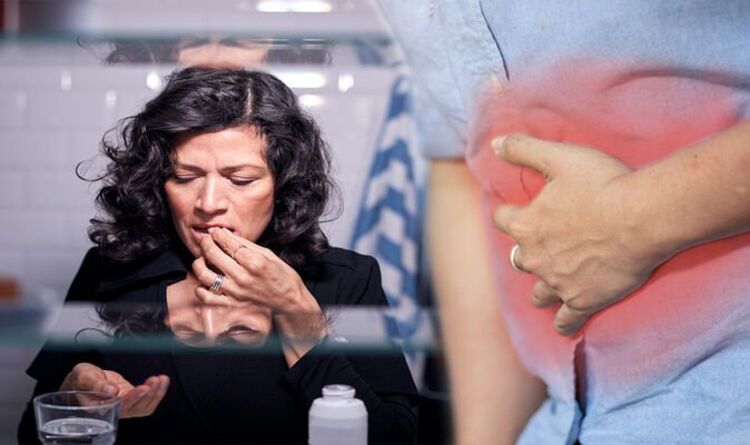Supplement warning: Popular pill taken for osteoarthritis acting ‘as food to cancer cells’
Olivia Williams discusses ‘bizarre’ symptom of pancreatic cancer
We use your sign-up to provide content in ways you’ve consented to and to improve our understanding of you. This may include adverts from us and 3rd parties based on our understanding. You can unsubscribe at any time. More info
Pancreatic ductal adenocarcinoma (PDA) is one of the deadliest human cancers with no clinically effective treatment options. PDA is characterised by an intense fibroinflammatory stroma, poor vascularity, deregulated nutrient levels, and rich deposition of extracellular matrix (ECM) components. A pancreatic tumour’s microenvironment is highly stromal, meaning the mass itself is mostly comprised of connective tissue and non-cancerous immune cells. Hyaluronic acid or hyaluronan (HA) is a major stromal component and its accumulation has been shown to play a central role in promoting tumorigenesis and progression of disease.
Hyaluronic acid, or HA, is a known presence in pancreatic tumours, but a new study from researchers at the University of Michigan Health Rogel Cancer Center shows that hyaluronic acid also acts as food to the cancer cells.
The findings were recently published in eLife and provide interesting insight into how pancreatic cancer cells grow indicating new possibilities to treat them.
Lead investigator Doctor Costas Lyssiotis and his study team looked at the metabolism of pancreatic cancer in preclinical models: how cells obtain nutrients and the spectrum of nutrients they utilize to fuel growth and enable therapeutic resistance.

Many people take hyaluronic acid supplements for its skin benefits, especially alleviating dry skin, reducing the appearance of fine lines and wrinkles and speeding up wound healing.
It can also help relieve joint pain in people with osteoarthritis.
Hyaluronic acid is a substance that occurs naturally in the skin, eyes, and joints.
Its primary function is to trap water inside tissue cells, keeping joints lubricated which according to the recent study could be the driving factor for increased pancreatic cancer tumours.
“Stroma occurs in the body’s natural scarring process,” Lyssiotis explained.
“As these scars are formed, an abundance of hyaluronic acid gets released.”
Hyaluronic acid—a polymer or long chain of sugars— attracts and retains water.
When a lot of it is present, pancreatic tumours become hyperdense, collapsing veins and blood flow.
Lyssiotis says these tumours then become very hard.
“It’s not that there aren’t veins or arteries inside the tumour. But the vasculature that is there can’t withstand the extreme pressure.”

Lyssiotis and his lab wanted to understand hyaluronic acid beyond its contribution to the physiological make-up of pancreatic cancer cells.
They considered the density of these tumours, and wondered: If cancer cells aren’t getting access to blood-derived nutrients, how are they getting the nutrients that fuel cell growth and become tumours?
Cells which make up a tumour are a combination of many different cell types, some malignant, some not.
A pancreatic tumour’s microenvironment is mostly comprised of connective tissue and non-cancerous immune cells.
The lab’s new work indicates that one-way cells do this is by scavenging the hyaluronic acid itself.
“Hyaluronic acid doesn’t only affect tumours by creating this density, which does make it difficult to treat,” Lyssiotis said.
“It is literally a chain of sugars. In retrospect, it makes good sense that the malignant cells are also feeding off hyaluronic acid.”
Lyssiotis says this study demonstrates just how well pancreatic cancer cells scavenge nutrients in order to maintain their survival and growth.
Symptoms of pancreatic cancer include abdominal pain which radiates to the back, loss of appetite, jaundice, light-coloured stools, dark-coloured urine or itchy skin.
Source: Read Full Article
